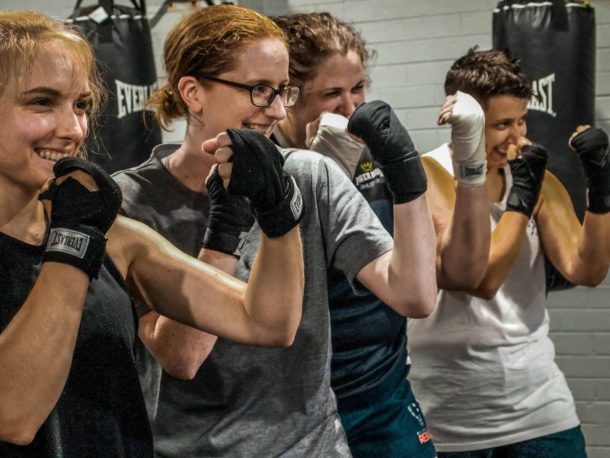Key takeaways
- You can’t outwork a bad diet
- Cardio is going to burn anywhere from 400-800 calories per hour
- Think of your cardio routine in total minutes each week, rather that focusing on just an individual session
- Start slow and gradually increase your total weekly load every week to build endurance and minimise your risk of injury
Assault Bike
Calories Burned Per Hour | 600-800*
✅ Provides a high-intensity workout that engages both upper and lower body muscles.
✅ Excellent for improving anaerobic capacity and cardiovascular endurance.
❌ Beginners may find it challenging to maintain a consistent pace due to the intense nature of the exercise.
Treadmill
Calories Burned Per Hour | 600-700*
✅ Effective for cardiovascular fitness and endurance.
✅ Allows for different workout intensity levels and incline settings.
❌ High impact can be tough on joints.
Spin Bike
Calories Burned Per Hour | 500-700*
✅ High-intensity workout that burns a significant number of calories in a short amount of time.
✅ Low impact on joints while providing an effective lower body workout.
❌ Not ideal for those with lower back issues.
Stairmaster
Calories Burned Per Hour | 500-600*
✅ Great for toning and shaping the lower body.
✅ Low impact, reducing stress on joints.
❌ May cause knee strain or discomfort for some users.
❌ Limited upper body involvement compared to other machines.
Cross Trainer
Calories Burned Per Hour | 500-600*
✅ Works both the upper and lower body simultaneously.
✅ Low impact, reducing the risk of injury and joint strain.
❌ The motion may not feel natural to some individuals.
Ski Erg
Calories Burned Per Hour | 600-700*
✅ Works the entire body, engaging the arms, core, and legs.
✅ Low impact, making it suitable for people with joint issues or those recovering from injuries.
❌ Requires proper technique to avoid strain and injury.
Rower
Calories Burned Per Hour | 400-600*
✅ Low impact, making it gentle on the joints while still providing an intense workout.
✅ Targets multiple muscle groups, including the legs, back, and arms.
❌ The rowing technique might take some time to master for beginners.
❌ Potential for back strain if the proper form is not maintained.
If you’re on a mission to shed some kilos and improve your overall fitness, cardio is your secret weapon. Cardiovascular exercises, commonly known as cardio, can be a game-changer in your weight loss journey. In this blog post, we’ll explore the benefits of cardio, different types of cardio exercises, calorie-burning potential, and how to create an effective cardio routine to achieve your fitness goals.
What counts as cardio?
Cardio exercises are those that elevate your heart rate and keep it up for an extended period. Popular forms of cardio include running, cycling, swimming, jumping rope, dancing, and even brisk walking. The key is to engage in activities that you enjoy, making it easier to stick to your fitness plan. In this article we’ll focus on the cardio machines you’ll find at the gym.
How do you plan out a cardio routine?
If you want to use cardio to help with weight loss it’s import to plan out a routine that’s sustainable and takes into account your current fitness levels.
Step 1.Start by picking a form of cardio you enjoy (or whichever one you hate the least 😅)
Step 2. Spend 5 minutes at the start of your normal workout and 5 minutes at the end of your workout (minimum 3 times per week) on your machine of choice. Feel free to alternate between machines to keep things interesting.
Step 3. Gradually increase your weekly load. This is the important part! Every week, increase your daily cardio time by 5 minutes (i.e. Week 1 = 10 mins per session, Week 2 = 15 mins per session, Week 3 = 20 mins per session). By increasing your volume gradually, you’ll help reduce the risk of injury (most injuries are a result of introducing too much volume too fast). By spreading out your weekly cardio across 3 sessions you’ll also be able to recover better and get more volume in on a weekly basis as oppose to restricting your cardio sessions to once or twice a week.
Step 4. Every 6 weeks give yourself a rest. It’s important that you give your body time to recover so you can keep the routine going long term.
*What factors impact how many calories you’ll burn?
It’s important to note, there are several factors influence the number of calories you burn during a cardio session:
- Body Weight: Heavier individuals tend to burn more calories during exercise.
- Intensity: Higher intensity workouts burn more calories per minute.
- Fitness Level: Regular exercisers may have a more efficient calorie-burning capacity.
- Workout Duration: Longer workouts generally burn more calories.
- Resting Metabolic Rate (RMR): People with higher RMRs burn more calories at rest and during exercise.



